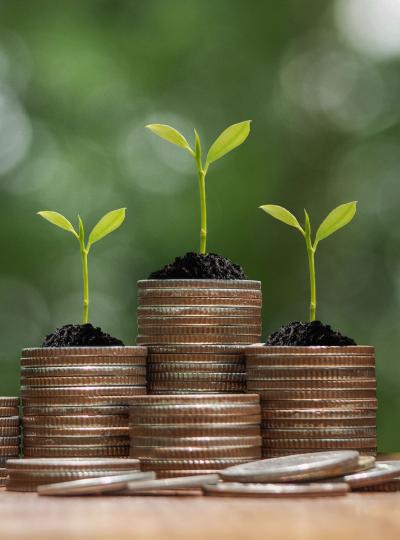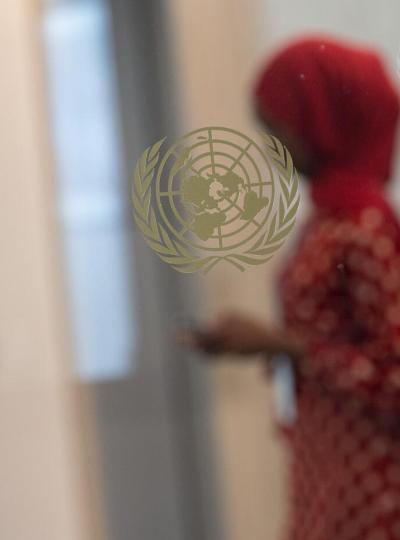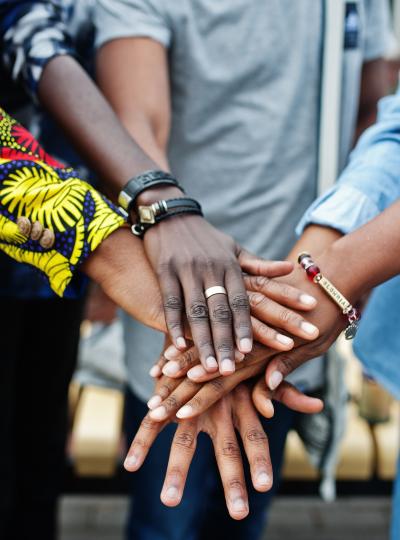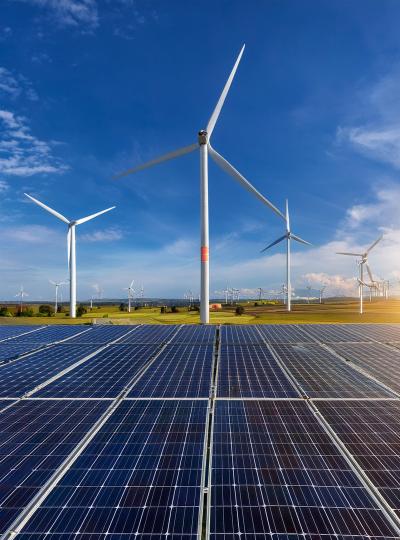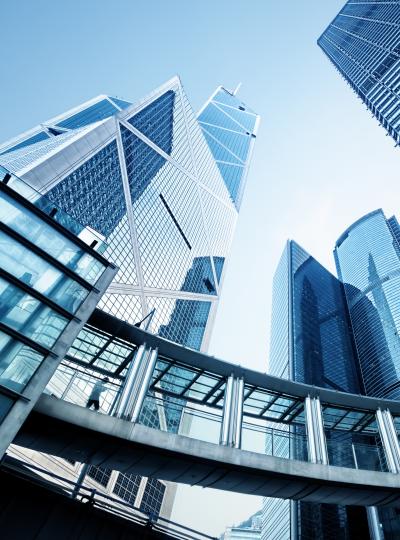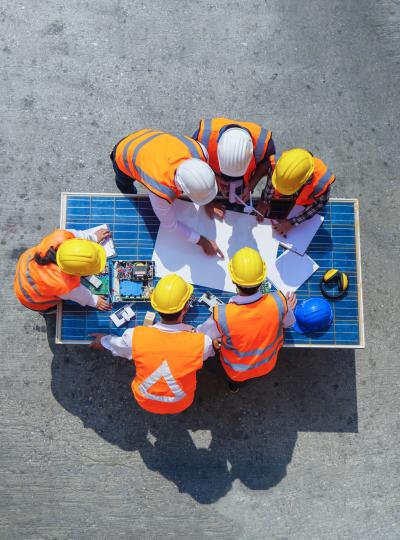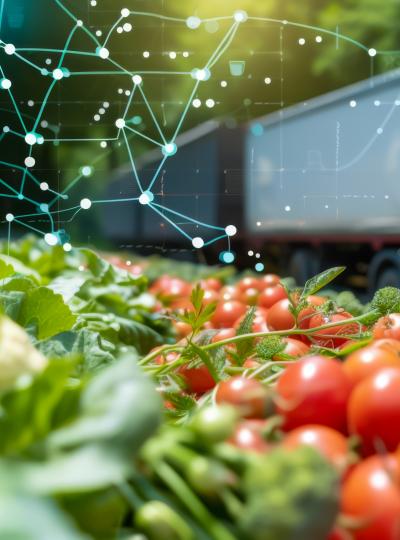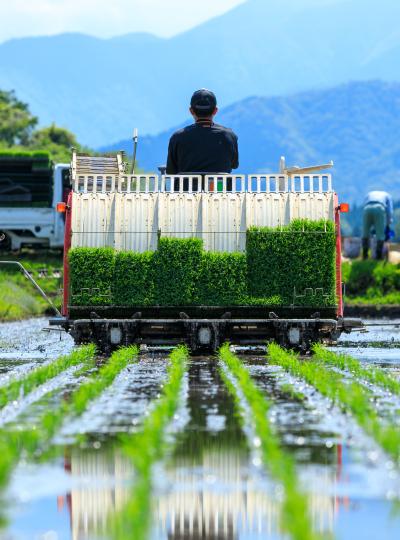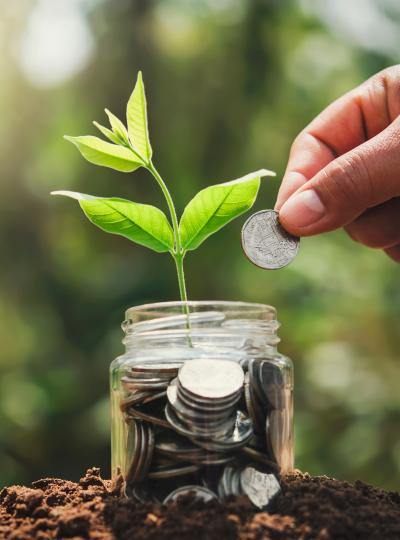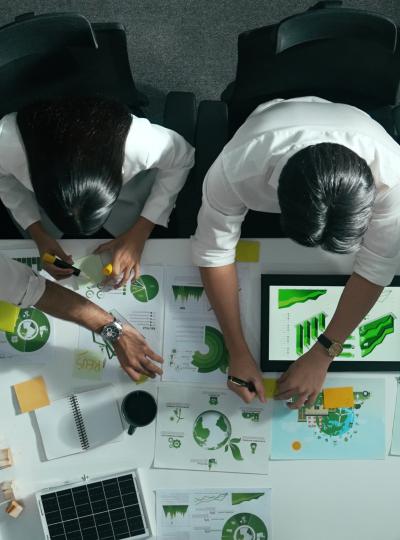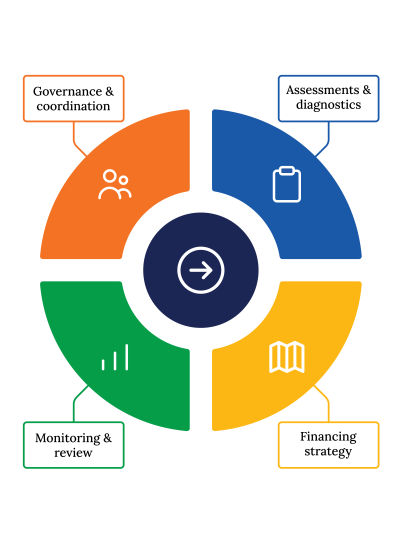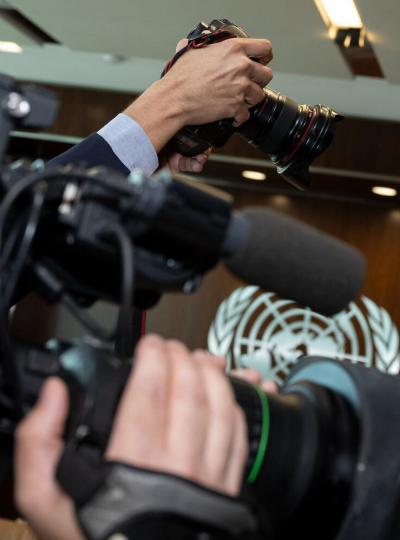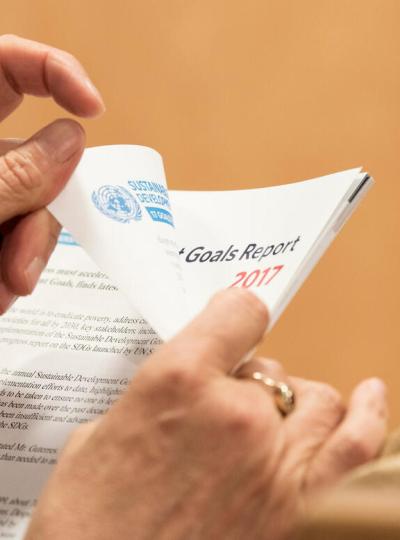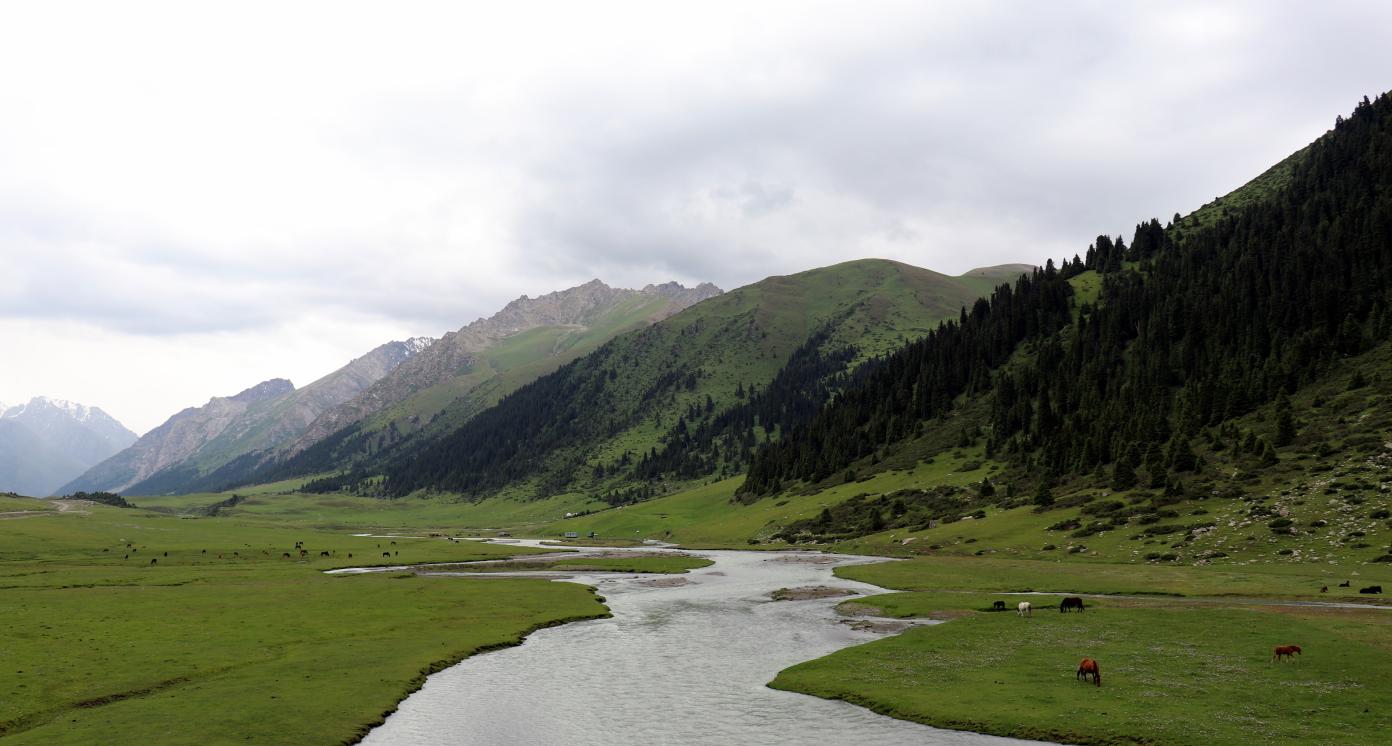Wastewater Treatment Solutions
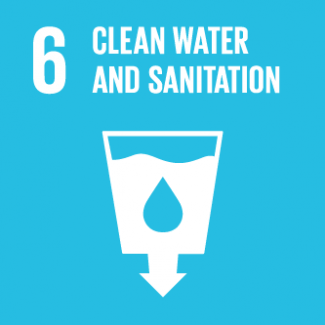
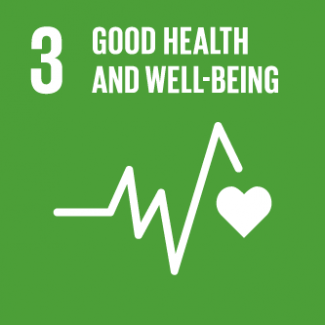
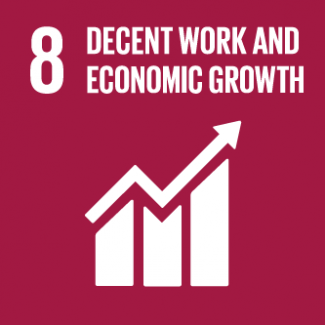
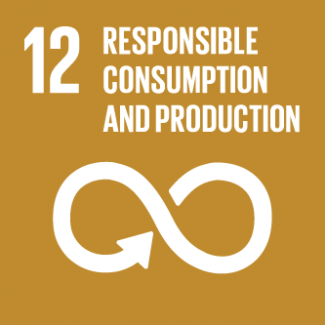
Business Model Description
Design, construct and install individual small- to medium-scale Wastewater Treatment Plants (WWTP) in recreational areas and tourist sites, catering establishments, car washes, and food production facilities, generating revenue through direct sales of turnkey WWTPs. As a procurement method, (international) competitive bidding can be considered.
Expected Impact
Improve access to reliable and affordable sanitation, reduce the impact of untreated wastewater discharge on ecosystems, and increase tourist attractiveness of remote destinations.
How is this information gathered?
Investment opportunities with potential to contribute to sustainable development are based on country-level SDG Investor Maps.
Disclaimer
UNDP, the Private Finance for the SDGs, and their affiliates (collectively “UNDP”) do not seek or solicit investment for programmes, projects, or opportunities described on this site (collectively “Programmes”) or any other Programmes, and nothing on this page should constitute a solicitation for investment. The actors listed on this site are not partners of UNDP, and their inclusion should not be construed as an endorsement or recommendation by UNDP for any relationship or investment.
The descriptions on this page are provided for informational purposes only. Only companies and enterprises that appear under the case study tab have been validated and vetted through UNDP programmes such as the Growth Stage Impact Ventures (GSIV), Business Call to Action (BCtA), or through other UN agencies. Even then, under no circumstances should their appearance on this website be construed as an endorsement for any relationship or investment. UNDP assumes no liability for investment losses directly or indirectly resulting from recommendations made, implied, or inferred by its research. Likewise, UNDP assumes no claim to investment gains directly or indirectly resulting from trading profits, investment management, or advisory fees obtained by following investment recommendations made, implied, or inferred by its research.
Investment involves risk, and all investments should be made with the supervision of a professional investment manager or advisor. The materials on the website are not an offer to sell or a solicitation of an offer to buy any investment, security, or commodity, nor shall any security be offered or sold to any person, in any jurisdiction in which such offer would be unlawful under the securities laws of such jurisdiction.
Country & Regions
- Kyrgyzstan: Issyk-Kul Oblast
- Kyrgyzstan: Chui Oblast
- Kyrgyzstan: Osh Oblast
- Kyrgyzstan: Jalal-Abad Oblast
Sector Classification
Infrastructure
Development need
In 2023, Kyrgyzstan ranked 89 out of 139 countries in trade and transport-related infrastructure score in the World Bank Logistic Performance Index. Low rail density and level of road pavement, depreciation of over 60% of all electricity assets, outdated water facilities, and costly digital infrastructure weaken the overall sector's resilience (1, 2, 3, 9).
Policy priority
The Program for the Development of Public-Private Partnership for 2022-2026 aims to use public-private partnerships to increase investments in the modernization of economic and social infrastructure. The National Development Programme for 2018-2040 envisages high-quality production infrastructure for economic development, including power engineering, water, and transport (4, 5).
Gender inequalities and marginalization issues
Due to the weak road and rail infrastructure, the rural population has limited access to trade and public services in regional centres. Waste management and sewerage infrastructure are also scarce in rural areas, while broadband installation is more difficult in the mountains (1).
Investment opportunities introduction
In 2023, foreign direct investments (FDI) to transport, water, and power infrastructure amounted to USD 19.6 million. In line with the government's objectives to develop high-quality production infrastructure, opportunities exist in road construction, multimodal freight hubs, waste recycling, water supply, and wastewater systems (10, 11).
Key bottlenecks introduction
Political instability and governance issues constrain the development of the sector. Additionally, the infrastructure sector lacks standardized project prioritization and is exposed to project overlap and duplication (1).
Utilities
Development need
In 2020, only 17% of the households in Kyrgyzstan had access to district heating, and 93% of the population lacked sewerage systems. Low tariffs and lack of public awareness about the service pay financially strain the sector and hinder the provision of water services, leading to limited management capacity, uncompetitive salaries, and a lack of qualified personnel (1, 2).
Policy priority
The Program for the Development of Potable Water Supply and Wastewater Systems in Settlements until 2026 aims to develop water supply and sanitation systems, using modern water treatment systems. The National Development Strategy for 2018-2040 emphasizes decentralized heating systems and increased gasification for cleaner heating as solutions to improve utility services (2, 5).
Gender inequalities and marginalization issues
65% of villages in Kyrgyzstan remain without water supply due to obsolete water networks and poor water management. Sewerage systems are limited in rural areas and usually consist of pit latrines with decking without heating and hygienic facilities. This particularly affects rural women, both in terms of domestic workload and health (2, 12).
Investment opportunities introduction
As of 2019, at least USD 245 million in investment was directed towards water supply and sanitation projects. Opportunities exist in electricity transmission and distribution, natural gas pipelines, construction and rehabilitation of drinking water supply and sewerage, and wastewater management (6, 7).
Key bottlenecks introduction
Institutional challenges related to capacities to plan, operate and maintain utility services, mountainous topography and seismic activity, and consequences of climate change such as floods and landslides, can variously hinder the sector's development (8).
Water Utilities and Services
Pipeline Opportunity
Wastewater Treatment Solutions
Design, construct and install individual small- to medium-scale Wastewater Treatment Plants (WWTP) in recreational areas and tourist sites, catering establishments, car washes, and food production facilities, generating revenue through direct sales of turnkey WWTPs. As a procurement method, (international) competitive bidding can be considered.
Business Case
Market Size and Environment
145 of wastewater treatment plants and 228 million cubic metres
In 2019, the Kyrgyz Republic had 145 active wastewater treatments plants (WWTPs), comprising 22 municipal plants and 123 departmental and private facilities. The total design capacities of biological WWTPs amount to 228 million cubic metres p.a (15).
Indicative Return
10% - 15%
Based on a wastewater treatment project with a capacity of 4,200 cubic metres per day in Balykchy City financed by the Asian Development Bank, the Economic Internal Rate of Return (EIRR) for wastewater treatment plant is 12.3% (16).
Investment Timeframe
Medium Term (5–10 years)
Based on a project financed by a USD 100,000 loan from the Kyrgyzstan Sustainable Energy Financing Facility (KyrSEFF), the payback period of a wastewater treatment plant for a hotel that serves around 500 guests is 10 years (17).
According to estimations of private companies, individual wastewater treatment projects can have a payback period between 5 to 10 years (18).
Ticket Size
< USD 500,000
Market Risks & Scale Obstacles
Market - Highly Regulated
Capital - Limited Investor Interest
Impact Case
Sustainable Development Need
Many existing wastewater systems in Kyrgyzstan have been in operation for over 30 years, resulting in declining sewerage service quality and highlighting the urgent need for renovation and upgrades at numerous facilities (7).
Malfunctioning wastewater treatment facilities with primitive chlorination units contaminate drinking water sources causing more than 20% of the samples examined to be of inadequate quality (7).
Tourism continues growing in Kyrgyzstan, with international tourist arrivals projected to reach 5 million by 2033, creating an additional strain on the sewerage systems (16, 21).
Gender & Marginalisation
Wastewater treatment plants serve only 64.1% of the urban population and 10% of rural communities, leaving many households unconnected to the network (7).
Expected Development Outcome
Investing in wastewater treatment solutions modernizes outdated sewerage infrastructure and decreases water loss during transportation to the population.
Wastewater treatment solutions contribute to decreased contamination of water sources and health hazards associated with it.
Wastewater treatment solutions alleviate the overload of the sewerage system resulting from the growing tourism in Kyrgyzstan.
Gender & Marginalisation
Wastewater treatment solutions expand access to sewage infrastructure for remote and rural communities by providing sewerage services to guest houses, which are also private.
Primary SDGs addressed

6.2.1 Proportion of population using (a) safely managed sanitation services and (b) a hand-washing facility with soap and water
6.3.1 Proportion of domestic and industrial wastewater flows safely treated
In 2018, the proportion of the population using safely managed sanitation services and a hand-washing facility with soap and water (indicator 6.2.1) was 96.3% but the proportion of the population with sustainable access to sanitation facilities (indicator 6.2.1.1) was only 42.62% in 2022 (22, 23).
In 2023, the proportion of domestic and industrial wastewater flows safely treated in Kyrgyzstan reached 96.97%, with Jalal-Abad and Chui oblasts significantly lagging behind, at only 62.29% and 58.09% level respectively (24).
The program for the development of drinking water supply and sanitation systems in populated areas of the Kyrgyz Republic until 2026 sets a target to provide sewerage systems services to at least 70% of the population living in regional centres with village status (7).

3.9.2 Mortality rate attributed to unsafe water, unsafe sanitation and lack of hygiene (exposure to unsafe Water, Sanitation and Hygiene for All (WASH) services)
In 2023, the mortality rate attributed to unsafe water, unsafe sanitation and lack of hygiene amounted to 0.7%. However, the mortality rate in Naryn and Jalal-Abad oblasts in 2023 reached 1.3% and 1.1% accordingly (25).
Secondary SDGs addressed


Directly impacted stakeholders
People
Gender inequality and/or marginalization
Planet
Corporates
Indirectly impacted stakeholders
People
Outcome Risks
The discharge of various effluents, if not purified, can contaminate watercourses and reservoirs and pose a significant danger to human life (26).
Impact Risks
The high vulnerability of the country to climate change effects can affect service delivery and damage the water infrastructure.
If wastewater treatment plants are not designed to treat sludge in accordance with discharge standards, the development of wastewater treatment will fail to reach the expected outcome.
Impact Classification
What
Wastewater treatment solutions offer accessible, autonomous sanitation, mitigating discharge pollution and enhancing the appeal of remote tourist destinations.
Who
Rural population engaged in tourism and residing near tourist sites, the planet, and tourism-oriented businesses benefit from accessible, affordable, and autonomous sanitation solutions.
Risk
High vulnerability to climate change and improper design of wastewater treatment plants can reduce the impact of this business model.
Contribution
Wastewater treatment plants deliver quality, safe, autonomous services, addressing gaps left by latrine toilets, as only 29.1% of the population has access to centralized sewerage (2).
How Much
This business model can contribute to the provision of sewerage systems to at least 70% of the population living in regional centres with village status (27).
Impact Thesis
Improve access to reliable and affordable sanitation, reduce the impact of untreated wastewater discharge on ecosystems, and increase tourist attractiveness of remote destinations.
Enabling Environment
Policy Environment
National Water Strategy until 2040, 2023: sets an objective to ensure safe and high-quality water supply, sanitation, and drainage, and to create a sustainable water resources management system in the Kyrgyz Republic (28).
Program for the development of drinking water supply and sanitation systems in settlements of the Kyrgyz Republic until 2026, 2020: defines actions for sustainable systems, minimizing environmental impact, addressing risks from climate change, and ensuring monitoring, and corrective measures (7).
National Development Strategy 2018-2040, 2018: aims at creating an economically sustainable, accessible service for safe and quality water supply and sanitation in every locality; promotes the use of modern water purification systems (5).
National Development Program until 2026, 2021: aims to create economically sustainable, affordable safe and quality water supply services; focuses on the construction and rehabilitation of physical infrastructure to bring water to 95% of the country's settlements (11).
Financial Environment
Financial incentives: Dos Credobank, Bailyk Finance, and Kyrgyzstan Bank offer loans between KGS 10,000 (USD 114) and KGS 8 million (USD 91,000) at 17-33% for up to 60 months for the development of resource-saving technologies in the tourism sector, including wastewater treatment plants (33).
Regulatory Environment
Resolution of the Cabinet of Ministers No. 445, 2022: provisions that all resort facilities in the Issyk-Kul region, including holiday homes, cottage villages, guest houses, and hotels, must have adequate utilities and infrastructure to operate, regardless of ownership or affiliation (29).
The Water Code of the Kyrgyz Republic, 2005: governs water use, protection, and resource development to ensure safe, sufficient water supply, environmental protection, and sustainable management of the nation's water resources (30).
Regulation on the procedure for providing land plots in state ownership, 2019: guarantees the direct provision of land plots owned by the state for the construction of socially significant facilities, including tourism, with investments of over KGS 1 billion (USD 11.4 million) (31).
Sanitary-Epidemiological Rules and Regulations, 2016: establishes the concept of a Sanitary Protection Zone around the wastewater treatment plants based on the sanitary classification of enterprises and the sources of atmospheric air pollution or from the borders of the industrial site (19, 32).
Marketplace Participants
Private Sector
Bintek, Ecostart, Bioworks Verfahrenstechnik of Hassan Allam Holding, Sky-tunuk, Aquaplast.
Government
Ministry of Water Resources, Agriculture, and Processing Industry, Ministry of Finances, National Investments Agency under the President.
Multilaterals
United Nations Development Programme (UNDP), UNICEF, Asian Development Bank (ADB), European Investment Bank (EIB), Islamic Development Bank (IsDB), European Bank for Reconstruction and Development (EBRD).
Non-Profit
Aga Khan Foundation, Regional Environmental Centre for Central Asia (CAREC).
Target Locations
Kyrgyzstan: Issyk-Kul Oblast
Kyrgyzstan: Chui Oblast
Kyrgyzstan: Osh Oblast
Kyrgyzstan: Jalal-Abad Oblast
References
- (1) World Bank. 2023. Central Asia. Kyrgyz Republic Infrastructure Governance Assessment. https://thedocs.worldbank.org/en/doc/b38abeabc516d7f3ac1ea83715d8f23a-0080012023/original/Kyrgyz-Republic-InfraGov-Report.pdf
- (2) The Cabinet of Ministers of the Kyrgyz Republic. 2020. Program for the development of drinking water supply and sanitation systems in populated areas of the Kyrgyz Republic until 2026. https://cbd.minjust.gov.kg/157536/edition/1037006/ru
- (3) World Bank. 2023. Connecting to Compete. Trade Logistics in the Global Economy. The Logistics Performance Index and Its Indicators. https://lpi.worldbank.org/sites/default/files/2023-04/LPI_2023_report_with_layout.pdf
- (4) Cabinet of Ministers. 2022. Resolution of the Cabinet of Ministers of June 30, 2022 No. 353. On approval of the Program for the Development of Public-Private Partnerships in the Kyrgyz Republic for 2022-2026. https://invest.gov.kg/wp-content/uploads/2023/03/Программа-развития-государственно-частного-партнерства-в-Кыргызской-Республике-на-2022-2026-годы-3.pdf
- (5) Cabinet of Ministers. 2018. The National Development Strategy of the Kyrgyz Republic for 2018-2040. https://policy.thinkbluedata.com/sites/default/files/National%20Development%20Strategy%20of%20the%20Kyrgyz%20Republic%20for%202018-2040%20%28EN%29.pdf "6) OECD. 2019. Sustainable Infrastructure for Low‑Carbon Development in Central Asia and the Caucasus. Hotspot Analysis and Needs Assessment. https://unece.org/sites/default/files/2022-09/ece.nicosia.conf_.2022.inf_.10.pdf"
- (7) The Cabinet of Ministers of the Kyrgyz Republic. 2020. Resolution of June 12, 2020 No. 330 On approval of the Program for the development of drinking water supply and sanitation systems in populated areas of the Kyrgyz Republic until 2026. https://cbd.minjust.gov.kg/157535/edition/1037004/ru
- (8) ADB. 2022. Kyrgyz Republic: Issyk-Kul Wastewater Management Project. Design and Build of Wastewater Treatment Plant in Balykchy. https://www.adb.org/sites/default/files/project-documents/50176/50176-002-sddr-en_1.pdf
- (9) IFC. 2021. Country Private Sector Diagnostics: Creating Markets in Kyrgyz Republic. https://www.ifc.org/content/dam/ifc/doc/mgrt/cpsd-kyrgyz-republic.pdf
- (10) National Statistical Committee of the Kyrgyz Republic. 2023. Foreign investment in 2023. https://www.stat.gov.kg/en/statistics/investicii/
- (11) Кабинет Министров Кыргызской Республики. 2021. Национальная программа развития Кыргызской Республики до 2026 года. https://faolex.fao.org/docs/pdf/kyr208595.pdf
- (12) UN Women. 2023. Sustainable Development Goals and Gender in Kyrgyzstan. https://data.unwomen.org/sites/default/files/documents/Publications/2023/Kyrgyz-SDG-gender.pdf
- (13) Binteq. 2024. [Home page]. http://binteq-group.kg/
- (14) Hassam Allam Holding. 2023. Karakol Wastewater Treatment Plant. https://www.hassanallam.com/news/karakol-wastewater-treatment-plant
- (15) State Agency for Environmental Protection and Forestry of the Kyrgyz Republic. 2020. National Report on the State of the Environment of the Kyrgyz Republic. http://aarhus.kg/wp-content/uploads/2021/05/NSOER_rus.pdf
- (16) Asian Development Bank. 2018. Issyk-Kul Wastewater Management Project - Economic Analysis. https://www.adb.org/sites/default/files/linked-documents/50176-002-ea.pdf
- (17) Green Economy Financing Facility. 2020. Supporting ecotourism and improving water efficiency in Kyrgyzstan. https://ebrdgeff.com/projects/supporting-ecotourism-and-improving-water-efficiency-in-kyrgyzstan/ "18) Stakeholder consultations with an Ecostart company in the wastewater treatment sector. November, 2024. "
- (19) Asian Development Bank. 2022. Kyrgyz Republic: Issyk – Kul Wastewater Management Project -- Design and Build of Wastewater Treatment Plant in Balykchy. https://www.adb.org/sites/default/files/project-documents/50176/50176-002-sddr-en_1.pdf
- (20) Stakeholder consultations with a private wastewater treatment company, November 2024. "21) World Travel & Tourism Council. 2023. Travel & Tourism Economic Impact 2023. 647f138f1d118f97fa0fb4db_EIR2023-Kyrgyzstan.pdf (website-files.com) "
- (22) Национальный статистический комитет Кыргызской Республики. 2018. Доля населения, использующего a) организованные с соблюдением требований безопасности услуги санитарии и b) устройства для мытья рук с мылом и водой. https://sustainabledevelopment-kyrgyzstan.github.io/6-2-1/
- (23) Национальный статистический комитет Кыргызской Республики. 2022. Доля населения, имеющего устойчивый доступ к санитарным сооружениям (показатель 6.2.1.1). https://sustainabledevelopment-kyrgyzstan.github.io/6-2-1-1/
- (24) Национальный статистический комитет Кыргызской Республики. 2023. Доля безопасно очищаемых хозяйственно-бытовых и промышленных сточных вод (показатель 6.3.1). https://sustainabledevelopment-kyrgyzstan.github.io/6-3-1/
- (25) Национальный статистический комитет Кыргызской Республики. 2023. Смертность от отсутствия безопасной воды, безопасной санитарии и гигиены (от отсутствия безопасных услуг в области водоснабжения, санитарии и гигиены (ВССГ) для всех (показатель 3.9.2). https://sustainabledevelopment-kyrgyzstan.github.io/3-9-2/
- (26) Karimov et al. 2024. Ecological and sanitary safety of water supply sources of the Kyrgyz Republic. https://www.bio-conferences.org/articles/bioconf/pdf/2024/26/bioconf_yrc2024_03007.pdf
- (27) Правительство Кыргызской Республики. 2020. Программа развития систем питьевого водоснабжения и водоотведения населенных пунктов Кыргызской Республики до 2026 года. https://cbd.minjust.gov.kg/157536/edition/1037006/ru
- (28) Правительство Кыргызской Республики. 2023. Национальная водная стратегия Кыргызской Республики до 2040 года. https://cbd.minjust.gov.kg/434906/edition/1230660/ru
- (29) Кабинет Министров. 2022. Постановление Кабинета Министров Кыргызской Республики от 21 ноября 2022 года №652 О внесении изменений в поставновление Правительства Кыргызской Республики. https://cbd.minjust.gov.kg/159638/edition/1249813/ru
- (30) Правительство Кыргызской Республики. 2005. Водный кодекс Кыргызской Республики. https://cbd.minjust.gov.kg/1605/edition/1201418/ru "31) Правительство Кыргызской Республики. 2019. Положение о порядке предоставления земельных участков, находящихся в государственной собственности. https://cbd.minjust.gov.kg/157147/edition/5586/ru"
- (32) Правительство Кыргызской Республики. 2016. Санитарно-эпидемиологические правила и нормативы. "Санитарно-защитные зоны и санитарная классификация предприятий, сооружений и иных объектов". https://cbd.minjust.gov.kg/11945/edition/1289218/ru
- (33) Pereto. 2020. Green Financing. https://pereto.kg/businesses-information?type=2
- (34) Национальный статистический комитет Кыргызской Республики. 2022. Доля населения, имеющего устойчивый доступ к санитарным сооружениям (показатель 6.2.1.1). https://sustainabledevelopment-kyrgyzstan.github.io/6-2-1-1/
- (35) Национальный статистический комитет Кыргызской Республики. 2023. Туризм в Кыргызстане 2019-2023. https://stat.gov.kg/media/publicationarchive/dcd4da72-e4a3-40a0-b439-3a3442961574.xlsx
- (36) International institute for Applied Systems Analysis. 2018. Industrial Development of Kyrgyzstan: Regional Aspects. https://invest.gov.kg/wp-content/uploads/2019/07/1-IIASA-Industrial-Development-of-Kyrgyz-Republic-Regional-Aspects-2018.pdf

